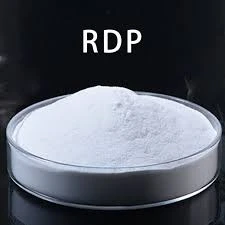
Nov . 19, 2024 13:24 Back to list
hpmc factory
The Evolution of HPMC in Modern Manufacturing
Hydroxypropyl Methylcellulose (HPMC) has become an essential material within the manufacturing sphere, significantly impacting a diverse array of industries, including pharmaceuticals, food production, construction, and cosmetics. The versatility and functional attributes of HPMC have led to its widespread adoption, making it a focal point for innovative production techniques and applications.
Understanding HPMC
HPMC is a semi-synthetic polymer derived from cellulose, a natural polymer predominately found in plant cell walls. The chemical modification process introduces hydroxypropyl and methyl groups into the cellulose structure, resulting in a compound that exhibits unique properties. HPMC functions as a thickening agent, stabilizer, and film former, which is vital for many formulations.
One of the key advantages of HPMC is its solubility in both hot and cold water, providing flexibility in application. In the pharmaceutical industry, for instance, HPMC is used as a binding agent in tablets, a coating agent to control drug release, and a thickener in liquid formulations. Its non-toxic and biodegradable nature also makes it particularly appealing for products that prioritize safety and environmental sustainability.
HPMC's Role in the Food Industry
In the food sector, HPMC is utilized as a food additive that enhances texture and moisture retention. It can stabilise emulsions, provide viscosity, and create a desirable mouthfeel in various food products ranging from sauces to baked goods. Its usage in gluten-free recipes has gained significant attention, offering a way to improve the structure of gluten-free bread and pastries without compromising on quality. As consumer demand for healthier, more sustainable food options grows, HPMC's role in the industry is likely to expand further.
Construction Applications
The construction industry has also seen a significant integration of HPMC into material formulations. It is commonly employed in various applications, including tile adhesives, plaster, and mortar. The inclusion of HPMC enhances the workability of these materials, allowing for extended open time and improved adhesive properties. Furthermore, HPMC helps in reducing water loss through evaporation, ensuring that construction materials maintain their integrity during the critical setting phase.
hpmc factory

Innovation and Research
As industries continue to evolve, the demand for HPMC has spurred extensive research and development. Scientists and manufacturers are working on modifying HPMC to enhance its properties further or to create derivatives that meet specific industry needs. This includes developing HPMC grades with varying viscosities and thermal properties for tailored applications.
Moreover, the rise of nanotechnology is opening new avenues for HPMC applications. Researchers are exploring how HPMC can serve as a carrier for delivering nanoparticles in drug formulations, thereby improving bioavailability and targeting specific sites within the body. The potential for HPMC to enhance the effectiveness of nanomedicines presents an intriguing area for ongoing exploration.
Sustainability and Future Prospects
As sustainability becomes a central focus for many industries, the demand for natural and renewable materials is on the rise. HPMC is derived from cellulose, a sustainable resource, positioning it well within the green chemistry discourse. Its ability to replace synthetic polymers in various applications aligns with eco-friendly manufacturing goals.
Looking ahead, HPMC is expected to play an increasingly important role in smart manufacturing systems. As industries integrate technology and automation to improve production efficiency and reduce waste, HPMC's adaptability and compatibility with various processes will be crucial. The continuous innovations in formulation science combined with HPMC's inherent qualities offer a promising future for its applications.
Conclusion
In conclusion, the significance of Hydroxypropyl Methylcellulose in modern manufacturing cannot be overstated. Its multifunctional properties make it invaluable across multiple industries, from pharmaceuticals and food to construction. As ongoing research furthers its application and sustainability becomes paramount, HPMC stands out as a cornerstone of innovation in material science, paving the way for future advancements that could redefine industry standards. Whether in enhancing the efficacy of medicines or ensuring the quality of food products, HPMC remains a key player in the evolution of manufacturing processes.
-
Versatile Hpmc Uses in Different Industries
NewsJun.19,2025
-
Redispersible Powder's Role in Enhancing Durability of Construction Products
NewsJun.19,2025
-
Hydroxyethyl Cellulose Applications Driving Green Industrial Processes
NewsJun.19,2025
-
Exploring Different Redispersible Polymer Powder
NewsJun.19,2025
-
Choosing the Right Mortar Bonding Agent
NewsJun.19,2025
-
Applications and Significance of China Hpmc in Modern Industries
NewsJun.19,2025







